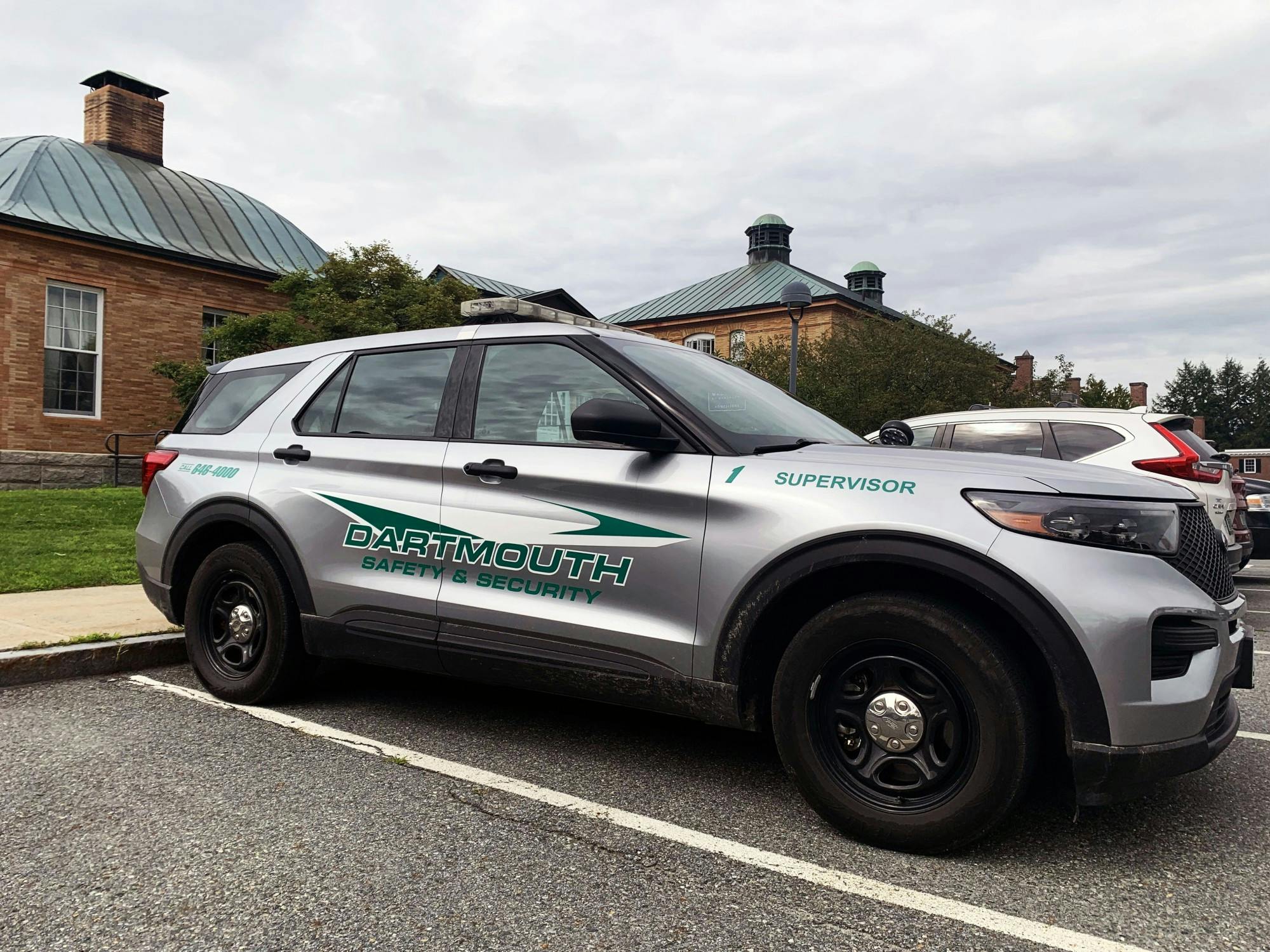At the onset of the pandemic, Dartmouth’s Department of Safety and Security replaced its SafeRide program with walking escorts — a decision the College has yet to reverse, according to Safety and Security associate director Douglas Babcock.
“The SafeRide program is under evaluation and the College is looking at a number of options regarding transportation of students,” Babcock wrote in an emailed statement. “There are a number of departments working to figure out how best to address the needs of the students in a sustainable manner.”
Babcock added that the Provost’s office, transportation services and representatives from the student body are involved in evaluating whether SafeRides will return.
Before the pandemic, the SafeRide program offered individual, vehicular transport by on-duty Safety and Security officers between 9 p.m. and 4 a.m. to students who felt unsafe walking alone, Safety and Security director Keysi Montás wrote in an emailed statement. Walking escorts are still provided by uniformed security officers but, unlike SafeRides, are not provided to students at private residences or off-campus locations, according to the Safety and Security website.
Student Wellness Center director Caitlin Barthelmes said the College sought to both reduce COVID-19 transmission and provide options for students faced with unsafe situations to travel across campus with walking escorts.
According to Barthelmes, both SafeRides and walking escorts attempt to offer students a “safe journey” and work to de-escalate potentially dangerous situations.
“Having a third-party person appear in a situation that is causing concern can de-escalate that situation and intervene,” Barthelmes said. “…From our work with bystander intervention, we know that anything that interrupts the moment, whether that’s a vehicle showing up or a person in a uniform showing up, is going to do something in terms of shifting the situation.”
Barthelmes added that walking escorts do more to minimize risk on campus than SafeRides do.
“The presence of officers visibly around campus is another environmental strategy for reducing risk,” Barthelmes said. “When folks are walking alongside an officer, there is a visible presence of the partnership that’s focused on safety.”
However, Ellie Cliff ’22 noted that SafeRides are able to “completely remove” students from unsafe environments, in contrast to walking escorts, who cannot provide as quick of an exit.
Cliff added that SafeRides are also needed for injured students who cannot walk unassisted and need vehicular transport to get to class or their other commitments.
Although Montás noted that medical transports are still offered 24 hours a day for students with a sudden illness or injury, provided they comply with COVID-19 safety measures, rides are not intended to accommodate these students in non-emergency situations.
Julia Luo ’23 said she received a medical transport from Safety and Security to her dorm after “severely” injuring her ankle on July 30. The following day, however, she said that Safety and Security denied her two rides, including one to her scheduled meeting with an athletic trainer, due to the suspension of the SafeRide program.
In those moments, “no one tried to offer any services,” Luo said. “I just had to make my own arrangements during that time.”
Luo said Safety and Security eventually notified her that Dick’s House would have scooters she could use. But after crutching her way there and waiting over an hour, she said she was informed that a scooter was unavailable.
In addition, Luo said that Safety and Security recommended that she use the Advanced Transit system, a free public transportation service that offers four different routes looping around campus. Luo called the solution “ignorant,” citing students’ varied schedules that may fail to align with the service.
“In all my correspondence with [Safety and Security], I just found a complete lack of empathy at every level,” Luo said. “And I would characterize a lot of the conversations as rude and dismissive. I just didn’t feel a regard for the safety and security of students from the organization that's specifically dedicated towards that.”
Luo wrote in an emailed statement that on August 4, Montás reached out to her to check-in about her injury and said that if she was still on crutches, Safety and Security would “try and work with [Luo] to assist.”
In the upcoming year, Barthelmes said it is important to collect data such as utilization rates and student and officer feedback before making a final determination as to whether the SafeRide program should be reinstated.
“Both quantitative and qualitative data can help us improve programs and services … and help us reevaluate the decisions around what method the escort should be taking,” Barthelmes said.
Aaron Trauner ’22, a trained student advisor in the Sexual Assault Peer Alliance, said he does not feel SafeRides should be eliminated, but noted that walking escorts could be more effective at “optimizing the time” of Safety and Security officers.
“I think there might've been a tendency for SafeRides to have been misused through the wintertime — to only be used, not because somebody felt unsafe, but because it was cold outside and they didn't want to walk,” Trauner said. “Limiting escorts to a safe walk might make it less attractive to take advantage of the system.”




